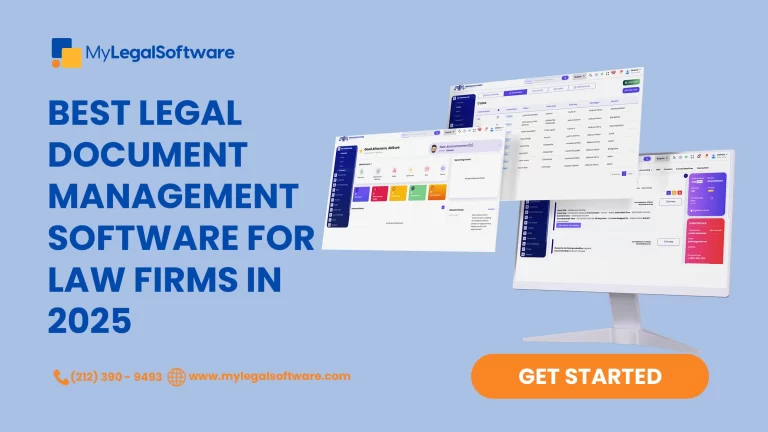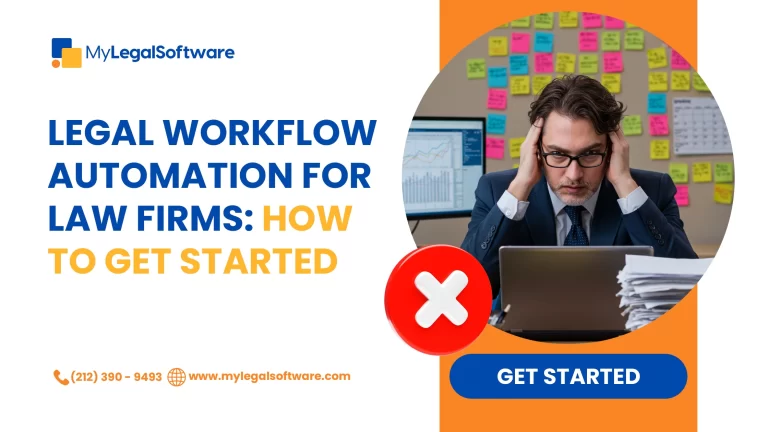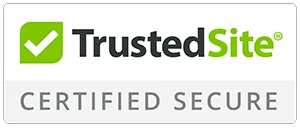In today’s digital world, mastering Search Engine Optimization (SEO) is like holding the keys to the internet. SEO ensures that websites show up prominently in search engine results, connecting users with the information, products, or services they seek.
SEO isn’t just a fancy term; it’s the secret weapon that makes your website visible online. Without SEO, your site might as well be lost in the space of the internet, rarely seen by those you want to reach. But with effective SEO, your website can rise to the top of search results, drawing in organic traffic and potential customers.
See SEO as an evolving tool that constantly adapts to new technology and user habits. What worked yesterday might not work tomorrow. Search engines like Google are always tweaking their algorithms to provide better results, which means your SEO strategies need to evolve too. The SEO landscape has become more complex with voice search, mobile optimization, and AI-driven algorithms.
The purpose of this comprehensive guide is to dissect SEO and empower you with the knowledge and tools to navigate it effectively. Whether you’re a business owner, content creator, marketer, or simply curious about how search engines work, this guide is tailored to your needs.
What is SEO?
Search Engine Optimization (SEO) is a set of techniques and strategies and a part of digital marketing. It’s about understanding how search engines, like Google,Microsoft Bing,etc work and using that knowledge to make your website more visible and accessible.
SEO is a guide in the digital space. It helps websites climb higher in search results, making them more likely to be seen by people looking for similar information, products, or services.
Digital marketing involves various online strategies like creating interesting content, using social media, and running online ads. SEO goes hand in hand with these efforts by ensuring your content and website are easy to discover by both search engines and people.
When you combine SEO with other digital marketing tactics, you create a powerful online presence that can attract, engage, and turn visitors into customers. SEO isn’t just about being online; it’s about being found and making meaningful connections with your audience.
See the whole idea in our digital marketing mastery guide.
The Three Pillars of SEO
These three pillars of SEO—Technical, Content, and Off-Site Optimization—work together to make your website accessible, informative, and reputable:
Technical SEO:
- Technical optimization starts with your website’s architecture: Elements like your URL structure, navigation menu, and how pages are connected through links matter here. If your website is not optimized, search engines will struggle to find it.
- User experience is another vital aspect of technical SEO: Search engines websites that load quickly and are easy to use. Elements like mobile-friendliness, secure connections (HTTPS), and avoiding annoying pop-ups all contribute to a better user experience.
- Structured data (schema): adding structure to your site so search engines can understand what each one is about. It helps search engines better understand your content and can make your website stand out in search results.
Content optimization:
In the realm of SEO, it’s crucial to optimize your content with a dual focus: catering to both human audiences and search engines. This entails optimizing what your readers perceive (the visible content on your webpage) and what search engines interpret (the underlying code).
For human readers, your content should be:
- Relevant to your expertise.
- Rich with keywords people use to find your content.
- Original and well-written.
- Up-to-date and accurate.
- Engaging, with multimedia like images and videos.
- Better than what others offer in search results.
For search engines, content optimization involves the unseen details, like organizing your library’s shelves. This includes:
- Crafting descriptive titles and meta descriptions.
- Using header tags (H1-H6) to structure your content.
- Providing clear image descriptions (alt text).
- Adding social media and metadata tags to enhance how your content appears when shared.
One other aspect worth taking note of is Voice Search. Learn more about it in our Voice search SEO guide
Off-Site Optimization:
Off-site optimization are activities that help your library get recognized and recommended by others.
- Link building: this is the most well-known off-site SEO activity. It’s about getting other websites to link to your pages. Quality links from trusted websites can boost your website’s reputation in the eyes of search engines.
- Brand building and brand marketing: are like creating awareness for your brand. It’s about building recognition and trust in your brand.
- Content marketing: this on the other hand, involves creating valuable resources like books, videos, and research studies that other websites want to share.
- Social media marketing and optimization: this is about optimizing your presence on social platforms (Instagram, Twitter, LinkedIn, etc) and sharing relevant content.
- Listing management: this is making sure your library’s address and contact information are correct in every directory or phone book in town. You want people to find you wherever they look.
- Ratings and reviews: collecting feedback from visitors and responding to it. Positive reviews make more people want to visit your library.
The SEO Algorithm Landscape
Search engines like Google, Bing, and others are massive engines that store information about websites on the internet. These engines have special algorithms that organize websites based on how useful and relevant they are to searchers.
Introduction to Leading Search Engines (Google, Bing, and More)
When you ask search engines questions by typing it into the search bar, they go through the internet to find the best answers for you. These search engines have become really good at this over the years and are the go-to places for finding information online.
But there’s more than just Google and Bing; there are other search engines, like Yahoo, DuckDuckGo, and many more, each with its own way of organizing and presenting information. So, understanding these leading search engines means knowing how they work and how they decide which web pages to recommend when you ask them a question.
Insights into Algorithm Modifications (e.g., Google’s Core Updates)
Search engines regularly update their algorithms to make sure they stay organized and provide the best results. When we talk about “algorithm modifications” like Google’s Core Updates, it’s like saying the engines have decided to change how they organize websites.
These updates can impact how websites are ranked in search results. So, if your website was doing well before the update, it might need some adjustments to keep performing well in the new system. Understanding these modifications helps you to stay up to date with the latest algorithms, ensuring that your website remains visible and helpful to people searching for information.
The Foundation of SEO
In the world of websites and search engines, keywords are the foundation of SEO. When you type something into a search engine like Google, those words are the keys you use to find what you’re looking for.
Types of Keywords
There are two main types of keywords: Short-tail and Long-tail keywords
- Short-Tail Keywords
Short-tail keywords are brief and usually consist of one or two words. These keywords are quite broad and capture a wide range of topics or searches.
Example:
“Shoes”
“Digital marketing”
Characteristics of Short-Tail Keywords:
- Broad and general.
- Highly competitive because many websites target them.
- Attract a large volume of traffic.
- Often used by people who are in the early stages of searching for information.
- Long-Tail Keywords
Long-tail keywords, on the other hand, are specific. These keywords address niche topics or cater to highly targeted searches. They help you find exactly what you’re looking for.
Example:
“Running shoes for flat feet”
“Best digital marketing strategies for small businesses”
Characteristics of Long-Tail Keywords:
- Precise and specific.
- Lower competition because they cater to a narrower audience.
- Attract less overall traffic individually but can have higher conversion rates.
- Often used by people who are closer to making a decision or purchase because they know exactly what they want.
Choosing the Right Keywords:
The choice between short-tail and long-tail keywords depends on your goals and strategy. Short-tail keywords can bring a lot of traffic, but they are highly competitive, while long-tail keywords are more focused and can attract a specific audience.
Many successful SEO strategies involve a combination of both types to reach a broad range of potential visitors while also catering to those with specific needs.A balanced approach to keyword usage can help you reach a diverse audience and improve your website’s visibility on the internet.
Conducting Keyword Research
When searching for the best words to use on your website to attract visitors. The process and fundamental step to follow is Conducting Keyword Research.
Tools and Techniques
Keyword Research Tools:
Google Keyword Planner: It helps you find words and phrases that people are searching for on Google.
SEMrush: This tool shows you what your competitors are ranking for and suggests related keywords.
Ahrefs: It’s like a detective tool for keywords. It uncovers not only the keywords but also who’s linking to them.
Ubersuggest: This is a brainstorming buddy. It gives keyword ideas and tells you how competitive they are.
Brainstorming and Mind Mapping:
Put Yourself in Your Audience’s Shoes: Imagine what words or questions your potential website visitors might type into Google when looking for your content.
Mind Mapping: Create a visual map with your main topic in the center and related topics branching out. This helps identify keyword themes.
Competitor Analysis:
Spy on Competitors: Look at what keywords your competitors are ranking for. If it works for them, it might work for you.
Identify Gaps: Find keywords your competitors missed. It’s like discovering hidden treasure.
Long-Tail Keywords:
Think Specific: Instead of “shoes,” think “best running shoes for beginners.” Long-tail keywords are more specific and often have less competition.
Keyword Difficulty:
Know Your Strengths: Understand how hard it is to rank for a keyword. Pick a mix of easy and challenging keywords.
Search Volume:
Popular vs. Niche: Balancing act – you want keywords with enough searches, but not so competitive that you’re lost in the crowd.
User Intent:
Why Are They Searching? Consider the intent behind the search. Are they looking to buy, learn, or compare?
Content Optimization:
Natural Integration: Once you have your keywords, use them naturally in your content.
Tracking and Tweaking:
Measure Success: Use tools like Google Analytics and Google Search Console to see how your keywords are performing.
Adapt and Improve: If certain keywords aren’t working, switch them up. It’s like fine-tuning your strategy.
Local SEO:
Location Matters: If you have a local business, don’t forget to include location-based keywords.
Mobile Optimization:
Mobile-Friendly Keywords: People often use different words on mobile devices. Keep this in mind.
Measuring and Analyzing SEO Success
We Measure and analyze SEO success through Key Performance Indicators (KPIs), SEO Analytics Tools and SEO Reporting and Insights.
Three main KPIs used in measuring and analyzing SEO:
- Organic Traffic Growth: This is counting how many people visit your website through search engines. If this number goes up, it’s a good sign that more people are finding your website, which can lead to more opportunities for success.
- Keyword Rankings: Think of keyword rankings as your position in the race. Being on the first page of search results is like leading the race, while being on page 10 means you’re far behind. Monitoring rankings helps you see where you stand and where you need to improve.
- Conversion Rates: They represent actions you want visitors to take, like making a purchase or signing up. Analyzing conversion rates helps you understand how well your website turns visitors into customers or leads.
SEO Analytics Tools
These tools are essential for measuring and enhancing your SEO success, giving you the data and insights you need to make your website perform at its best.
- Google Analytics: Google Analytics is like a magnifying glass for your website. It provides valuable insights into your website’s performance, such as the number of visitors, where they come from, and what they do on your site. You can identify popular pages and understand your audience’s behavior, helping you make informed decisions to improve your website.
- Google Search Console: Google Search Console communicates with Google on your behalf, revealing which keywords bring visitors to your site. It also alerts you to issues that may affect your site’s performance and helps you monitor how your website appears in search results. With Google Search Console, you can keep your site healthy and optimize its visibility on Google.
SEO Reporting and Insights
SEO reporting is about using data to tell the story of your website’s journey, while monitoring algorithm changes ensures you stay competitive in the ever-evolving world of search engines.
- Creating Custom Reports: SEO reporting is telling a data-driven story about your website’s performance. Custom reports are personalized summaries that focus on the specific data points you find most important.
These reports help you track progress, share insights with your team or clients, and make informed decisions to improve your website’s performance.
- Monitoring Algorithm Changes: Search engines have algorithms that determine website rankings. Being aware of these changes allows you to adapt your strategy, maintain your SEO success, and even seize new opportunities as they arise.
Staying Up-to-Date with SEO Trends
Keeping your skills sharp is important in a constantly evolving world. Staying up-to-date with SEO trends involves understanding upcoming algorithm updates and embracing emerging technologies. Continuous learning through SEO blogs, forums, conferences, and webinars as well.
The Ever-Changing SEO Landscape:
- Upcoming Algorithm Updates: search engines keep changing the algorithms. Knowing about upcoming algorithm updates is like getting a heads-up on the new moves. Staying informed helps your website stay in tune with search engine preferences.
- Emerging Technologies (Voice Search, AI): SEO is like a puzzle, and emerging technologies are new puzzle pieces. Adapting to technologies like voice search and AI is like completing the puzzle. Embracing these tech advances enhances user experience and relevance.
Continuous Learning and Industry Resources:
- SEO Blogs and Forums: SEO blogs and forums are valuable knowledge hubs shared by experts. Forums allow you to engage in conversations and learn from others’ experiences.
- SEO Conferences and Webinars: SEO conferences and webinars are like attending school for SEO. Conferences offer insights from top experts, like learning from the best professors. Webinars are focused workshops, helping you delve deep into specific SEO topics.
Conclusion
As we’ve explored this comprehensive guide, you’ve discovered that SEO is a set of strategies and practices that anyone can grasp.
It is the art and science of making your internet presence shine. It’s about understanding your audience, creating valuable content, and making your website the go-to destination in your niche.
It’s a journey of continuous learning and adaptation. Like any skill, it takes time to hone, but the rewards are worth the effort.








